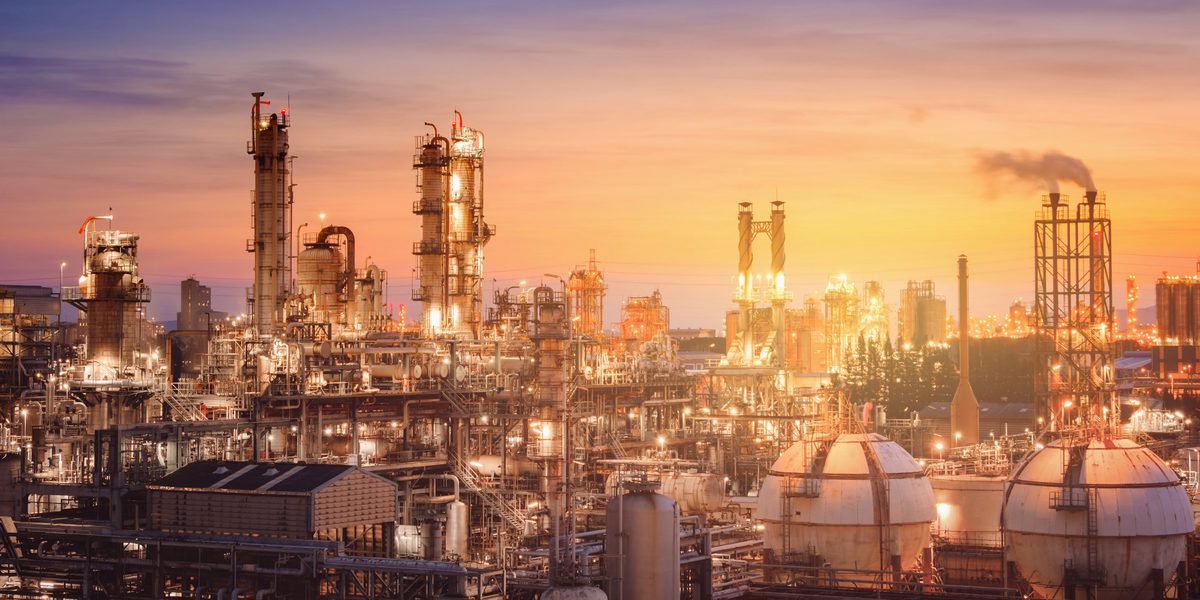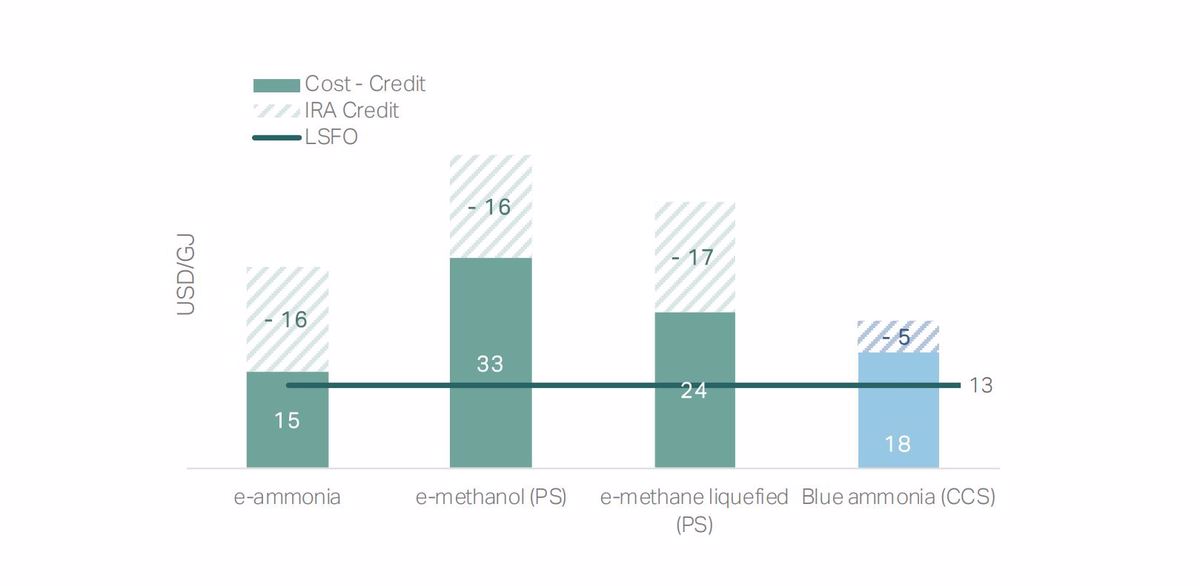US IRA will stimulate green and blue ammonia production – MMMCZCS
Green and blue ammonia bunker fuel producers stand to gain the most from US IRA subsidies, finds a Mærsk Mc-Kinney Møller Center for Zero Carbon Shipping (MMMCZCS) report.
 PHOTO: OCI Beaumont complex, an integrated methanol and ammonia production facility located on the Gulf Coast near Beaumont, Texas in the US. OCI
PHOTO: OCI Beaumont complex, an integrated methanol and ammonia production facility located on the Gulf Coast near Beaumont, Texas in the US. OCI
The US Inflation Reduction Act (IRA), signed into law in August 2022, is designed to promote production of low- and zero-emission fuels in the US by giving tax breaks and subsidies to producers. The US has allocated up to $500 billion to spend through this act.
The IRA is a supply-side incentive that will encourage alternative maritime fuel producers to produce green marine fuels with zero-emission potential like green and blue ammonia, e-methanol and e-methane, MMMCZCS explains.
Green getting big tax break
Tax credits for green hydrogen production (45V credits) and tax credits for carbon capture and storage (45Q credits) are the most relevant for alternative maritime fuel producers in the US, MMMCZCS explains.
Green hydrogen, produced through water electrolysis with renewable electricity, will qualify for up to $3/kg ($3,000/mt) of tax credits known as 45V credits. Over a 30-year period, this translates to IRA subsidies of around $16 per gigajoule ($16/GJ) for green ammonia and e-methanol, and $17/GJ for e-methane, MMMCZCS calculations show.
Green ammonia production costs can be halved by 2030 through this production support, it says.
 CHART: Impact of IRA credits on alternative marine fuel production costs in 2030. MMMCZCS
CHART: Impact of IRA credits on alternative marine fuel production costs in 2030. MMMCZCS
Since blue ammonia production is eligible for the 45Q tax credit, it is estimated to reduce its production costs by $5/GJ in 2030.
Blue ammonia is typically blue hydrogen combined with nitrogen captured from the air and put through the so-called Haber-Bosch process. The hydrogen is actually fossil as it is produced from steam methane reforming of natural gas. But the carbon dioxide (CO2) emitted during this production process is captured, which can render it low- or zero-carbon.
“While the IRA does not fully close the cost gap with LSFO, it can narrow the gap to USD 2 per GJ for e-ammonia and USD 5 per GJ for blue ammonia," the MMMCZCS found.
Ammonia to dominate
The International Energy Agency has projected that ammonia bunker demand will make up 44% of total bunker demand by 2050. Norwegian ammonia producer Yara Clean Ammonia has said that blue ammonia be a more cost-effective and popular option than green ammonia because of the costly renewables expansion needed for the green version. To meet a projected rise in ammonia bunker demand, some companies are already planning to build green and blue ammonia production plants in the US.
OCI Global has confirmed that its blue ammonia plant in Texas is scheduled to begin production in 2025, with an initial capacity of 1.1 million mt/year. It will capture up to 95% of CO2 emissions released during grey ammonia production to yield blue ammonia. This is roughly equal to 1.7 million mt/year of CO2, OCI Global said. Captured CO2 can be permanently stored deep underground or used as feedstock for production of other fuels like e-methanol.
In addition, Japan-based INPEX Corporation, French industrial gas supplier Air Liquide, US-based chemical company LSB Industries and terminal operator Vopak Moda Houston are planning to build a 1.1 million mt/year blue ammonia plant by the Houston Ship Channel by 2027. The plant aims to capture at least 95% of direct CO2 emissions from hydrogen production, equivalent to roughly 1.6 million mt/year of CO2, Vopak confirmed.
The US has not imposed any restrictions on exports of subsidised green hydrogen or hydrogen-derived fuels, and this could present "a significant new export commodity for the US,” the MMMCZCS notes.
Aside from the IRA, the US has also earmarked $7 billion for infrastructure investments through the US Bipartisan Infrastructure Investment and Jobs Act of 2021. The report explained that the funds will be directed toward the development of seven hydrogen hubs, five of which are ports. This can enable easier distribution, transportation and bunkering of hydrogen and hydrogen-based fuels.
By Konica Bhatt
Please get in touch with comments or additional info to news@engine.online






